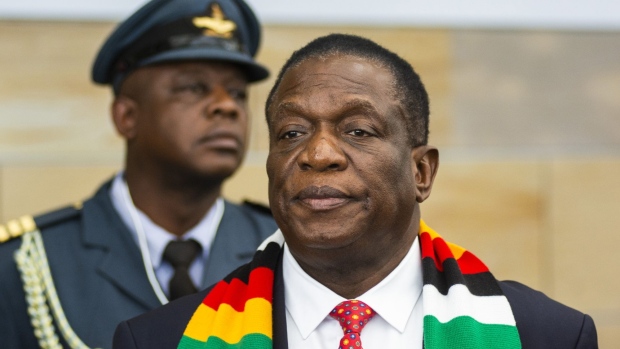He received three ovations as he presented his speech and went on to claim that Zimbabwe’s so-called mathematical irrigation farming methods had been so successful to the extent that the country was expecting to start exporting wheat next year as done by nations with surplus grain like Ukraine.
However, the Zimbabwe Vulnerability Assessment Committee (ZimVAC) 2022 Report compiled by his own government said that the country was experiencing food insecurity, with 5.6 million out of 16.6 million people (33%) having insufficient food and the report projected that 38% of rural households were likely to be cereal insecure at the peak of the lean season between October and last month.
Said Mnangagwa at the Feed Africa Dakar 2 Summit: “In Zimbabwe we had problems of food insecurity. We said how much food do we want per year to feed our country? We know we need about two million metric tonnes of grain.
So we said because there is climate change, how many hectares of land can we put under irrigation to produce the two million plus metric tonnes to feed the nation and we determine how much yield does a hectare have.”
“Once you do that, you now know how many hectares must we put under irrigation to achieve the amount of grain we need in spite of climate change. That we have done and we are now food secure.”
“We have been importing our wheat from Ukraine and fertilizer from Russia. Now that side is problematic.”
“So we decided and said we need about 240 000 metric tonnes of wheat, so how many hectares of land do we need to grow wheat and we calculated and we put that number under wheat and we are now wheat sufficient. We believe that next season we will be able to export wheat.”
In the ZimVAC report it is made clear that Zimbabwe is going through a season of biting hunger. ZimVAC is a consortium of government, development partners, United Nations, NGOs, technical agencies, and academia.
It was established in 2002 and is led and regulated by the government. It is chaired by the Food and Nutrition Council, a department in the Office of the President and Cabinet which says its mandate is to “promote a multi-sectoral response to food insecurity and nutrition problems in a manner that ensures that every Zimbabwean is free from hunger and all forms of malnutrition.”
Dr George Kembo chairs ZimVAC. The committee’s 2022 report said an increasing number of households were already experi[1]encing hardships from food insecurity, with the worst affected provinces being Matabeleland North (58%), Masvingo (41%) and Matabeleland South (36%).
It projected that the situation was likely to prevail in most typical deficit-producing areas through January 2023 and the peak of the lean season.
“The severity of household food insecurity was computed by the margin with which its potential energy access was below its minimum energy requirements… At peak, about 38% of the rural households are projected to be cereal insecure. This is an increase from 27% reported in 2021. Matabeleland North (58%) is projected to have the highest prevalence of cereal in[1]security during the peak hunger period,” reads part of the report.
In explaining its figures, ZimVAC said: “Household cereal security was determined by measuring a household’s potential access to enough cereal to give each member 2 100 kilo[1]calories per day in the consumption period 1 April 2022 to 31 March 2023.”
“Each of the surveyed household’s potential to acquire cereals was computed by estimating the household’s likely disposable income (both cash and non cash) in the 2022/23 consumption year from the possible income sources.”
Food security exists when all people at all times, have physical, social and economic ac[1]cess to what they can eat which is safe and consumed in sufficient quantity, including quality to meet their dietary needs and preferences. This is according to Zimbabwe’s Food and Nutrition Security Policy of 2012. — NewsHawks



